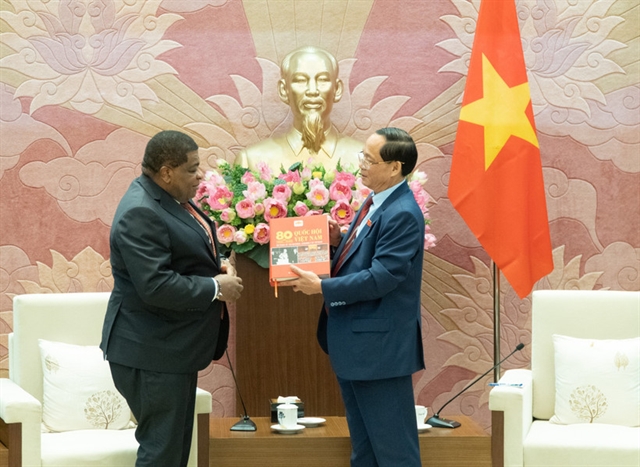 Society
Society

The first Bus Rapid Transit (BRT) pilot route in Hà Nội would be run from tomorrow and officially next month, enjoying incentives when running on road.
 |
| The first Bus Rapid Transit (BRT) pilot route from Yên Nghĩa Station to Kim Mã Statition in Hà Nội will run from tomorrow. — VNA/VNS Photo Việt Hùng |
HÀ NỘI — The first Bus Rapid Transit (BRT) pilot route in Hà Nội will run from tomorrow, with the route opening officially next month.
The municipal People’s Committee approved a proposal by the city’s police and transport departments over the operation of the BRT route which covers 14.7km from Kim Mã station in Ba Đình District to Yên Nghĩa station in Hà Đông District, head of the city’s Urban Transport Infrastructure Projects Management Board Vũ Hà said.
It will take approximately 30 minutes to travel the entire route, as opposed to the current hour or more.
It will run through Giảng Võ, Láng Hạ, Lê Văn Lương and Lê Trọng Tấn, as well as Trần Phú and Ba La streets.
As many as 21 bus stops have been built on the route, with a bus departing every five minutes and each carrying up to 90 passengers. Each bus is equipped with GPS system connected with a centre assisting in resolving incidents.
As the e-ticket system has not been completed, paper fares will be used, with each trip costing VNĐ7,000.
Other vehicles restricted
The BRT route will be prioritised in terms of traffic lights and lanes. Cars and taxis are restricted from entering the priority lanes for BRT buses.
From December 31, trucks with loads of at least 500 kilos and coaches will be restricted on roads from Lê Trọng Tấn Street to Tố Hữu – Vạn Phúc interchange from 6am – 9am and 4.30 pm – 7.30 pm.
Taxies are not allowed to run from Giảng Võ – Láng Hạ – Lê Văn Lương during rush hours. Vehicles like emergency cars or those carrying the elderly or people with disabilities are exmept from the ban.
Offices, restaurants and hotels along the BRT route must arrange parking lots and register with the city’s Transport Department if they want taxis.
All vehicles sharing the road with the BRT must not stop or park on the BRT route.
Motorbikes and bikes are restricted on the Láng Hạ- Huỳnh Thúc Kháng Fly-over and the Lê Văn Lương – Láng Fly-over during rush hours while trucks with loads of at least 500 kilos are banned from using the overpasses.
The project on Hà Nội’s first BRT route started in 2013 and was scheduled to open in the second quarter of last year but delays.
The cost of the project is VNĐ1.1 trillion (US$53.6 million) and is being financed through World Bank loans. — VNS




